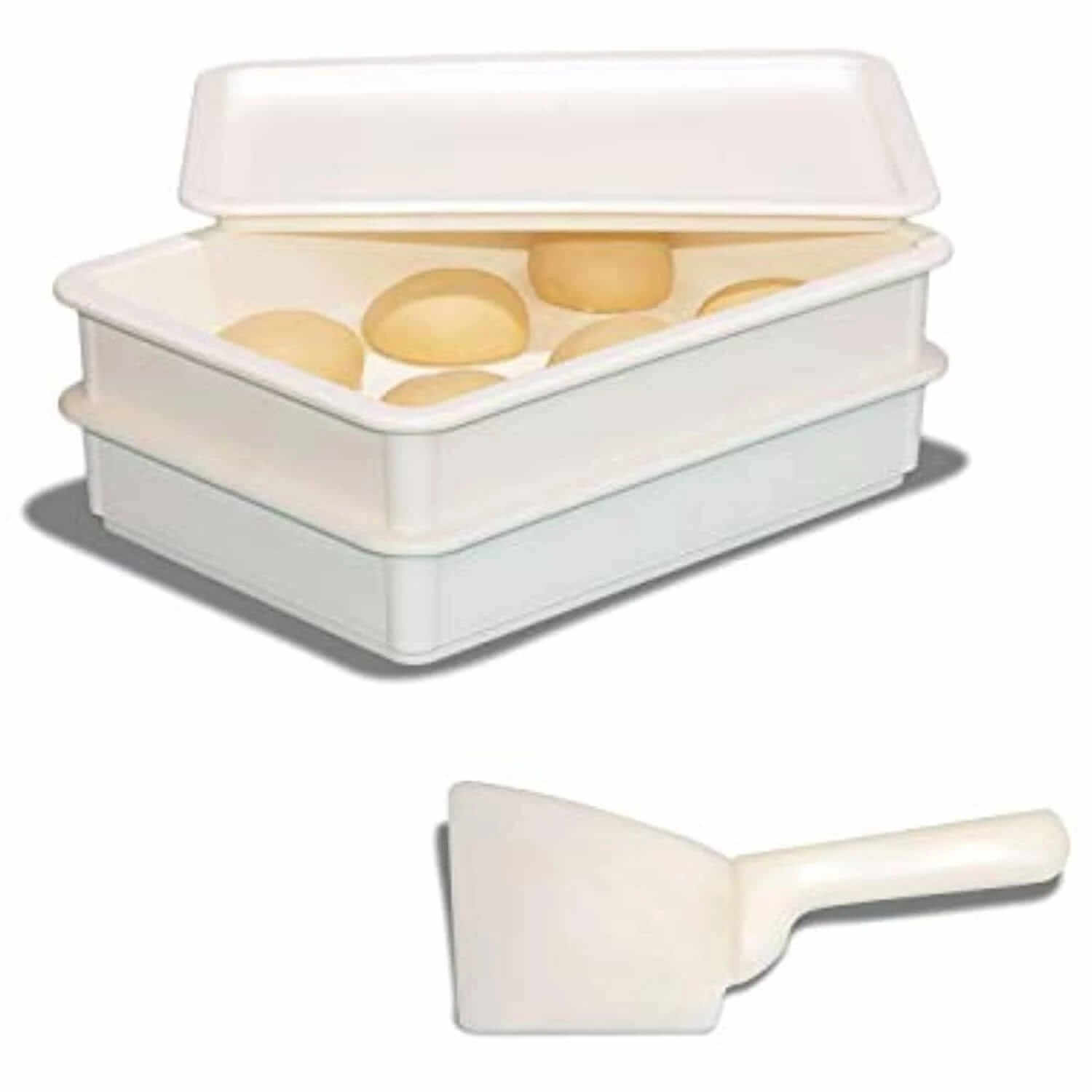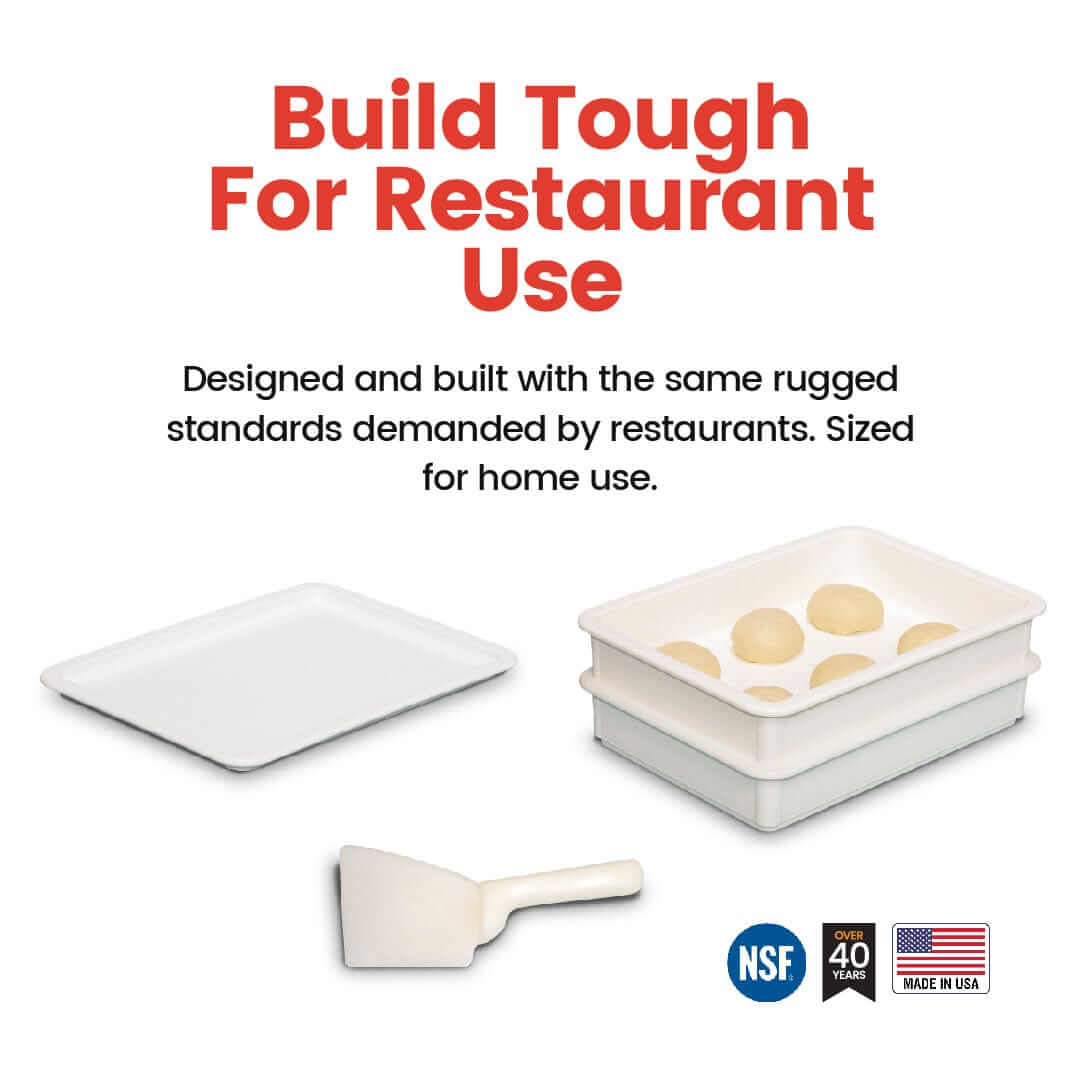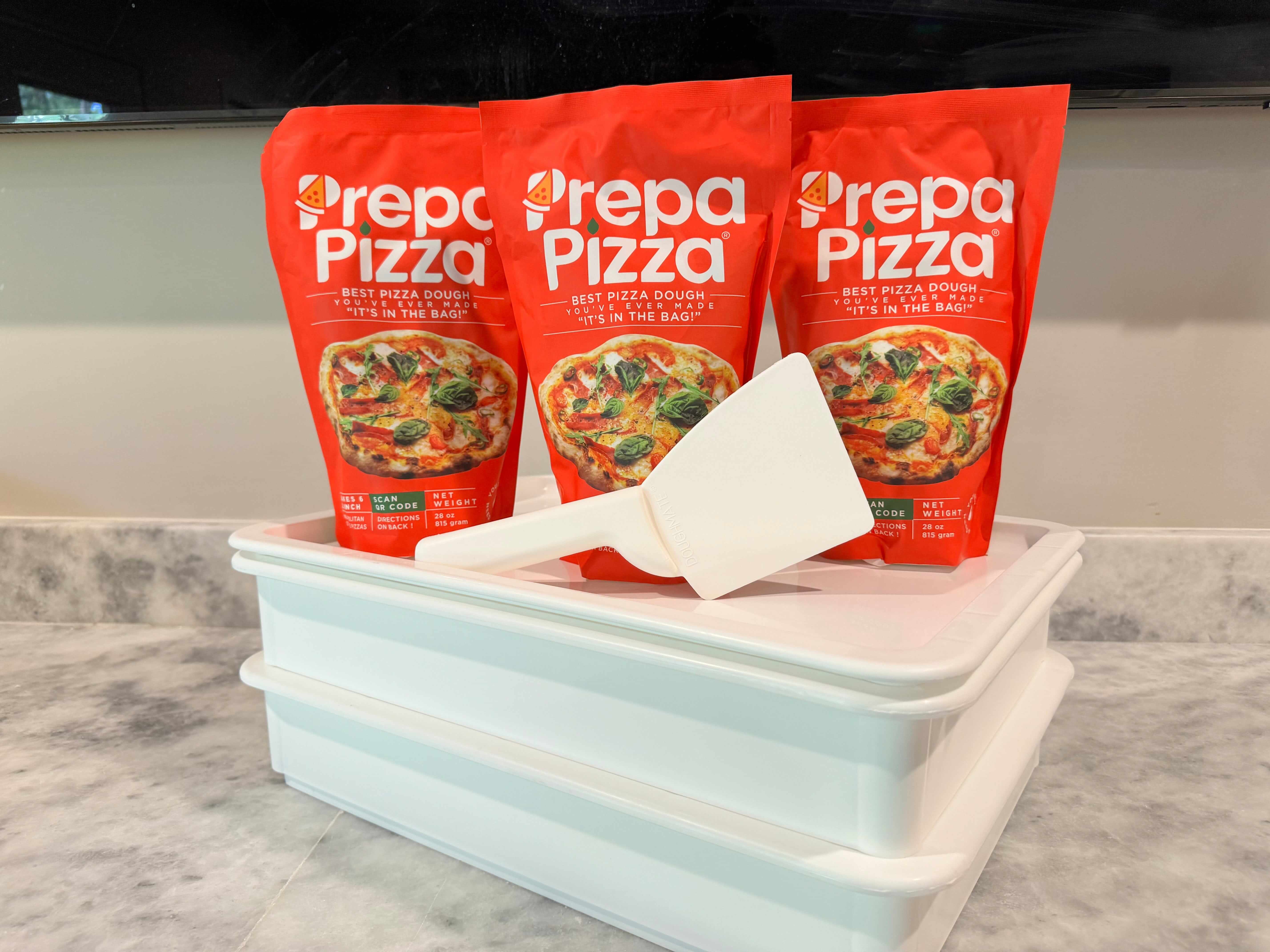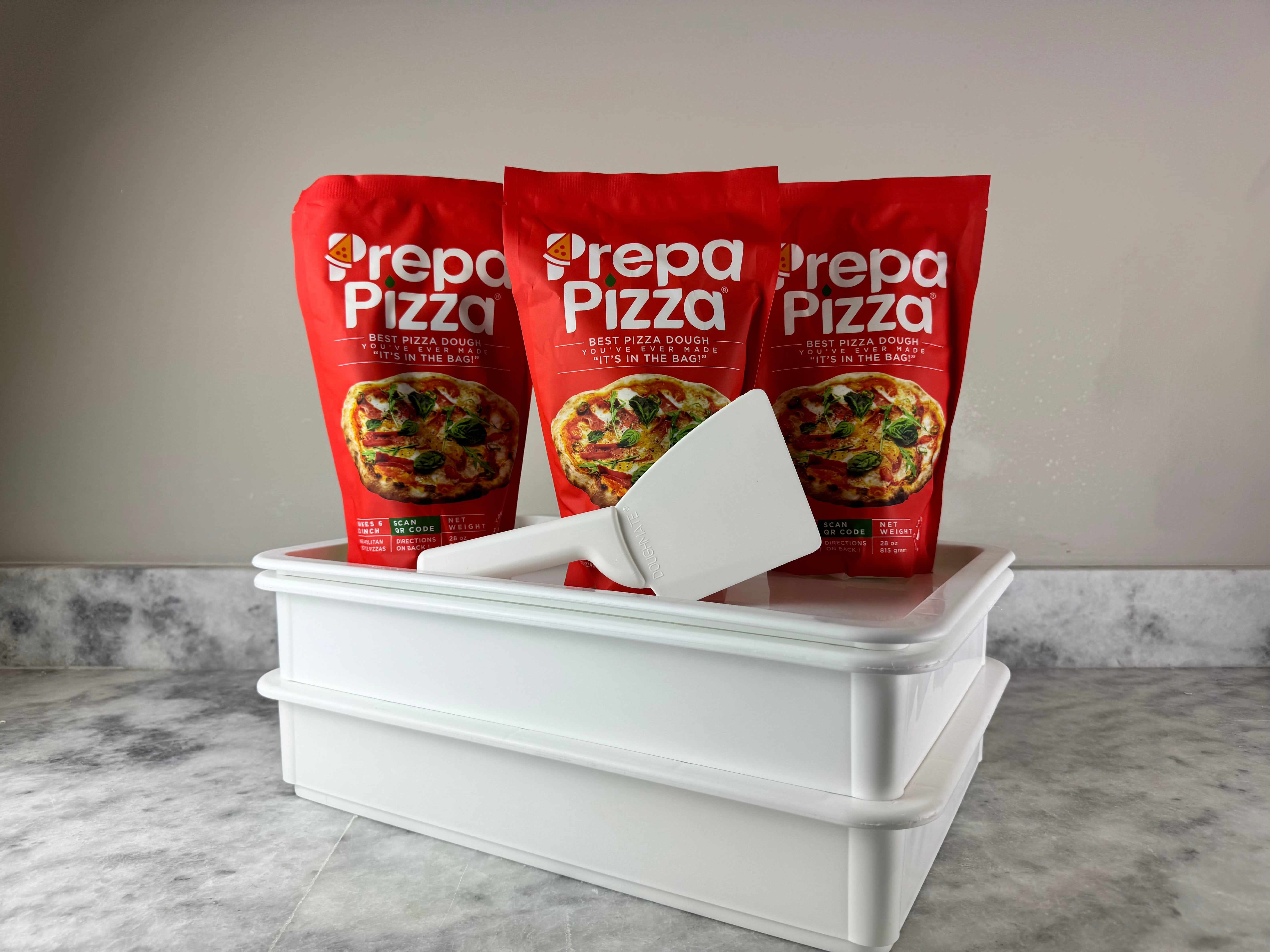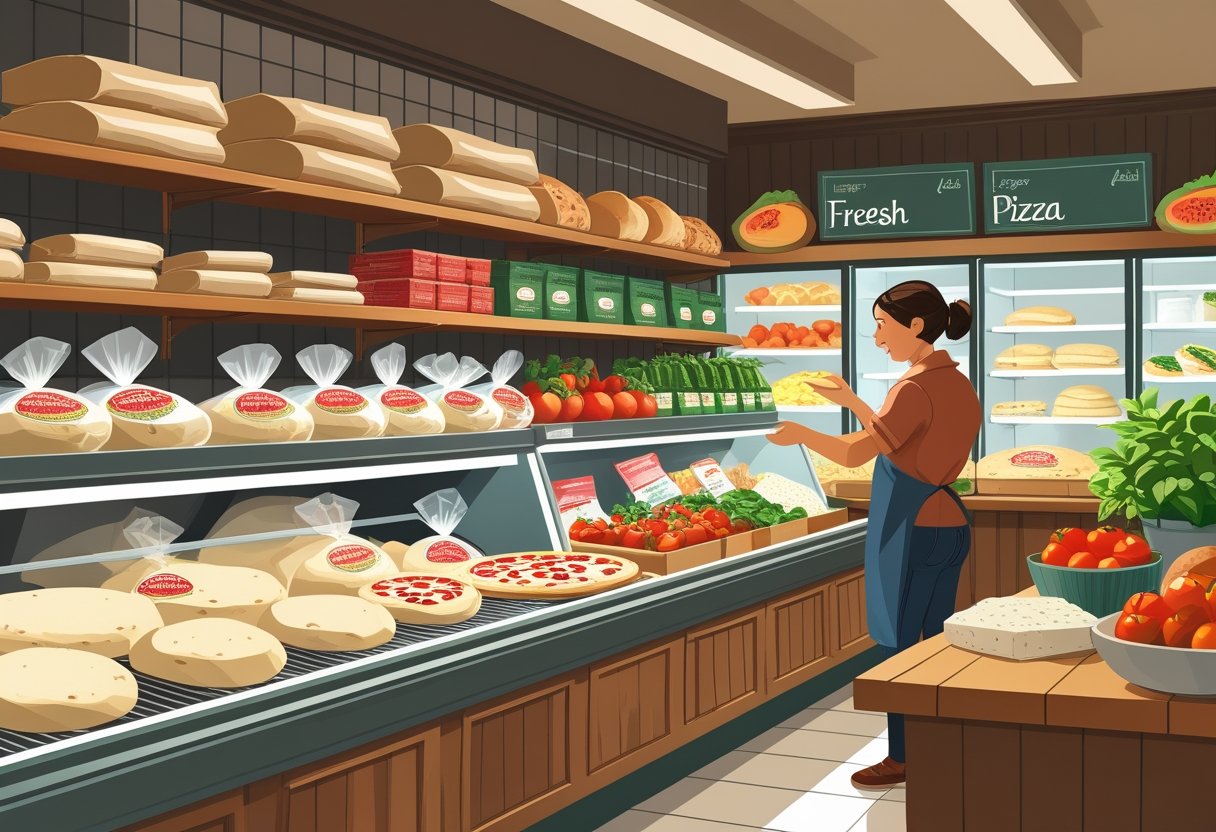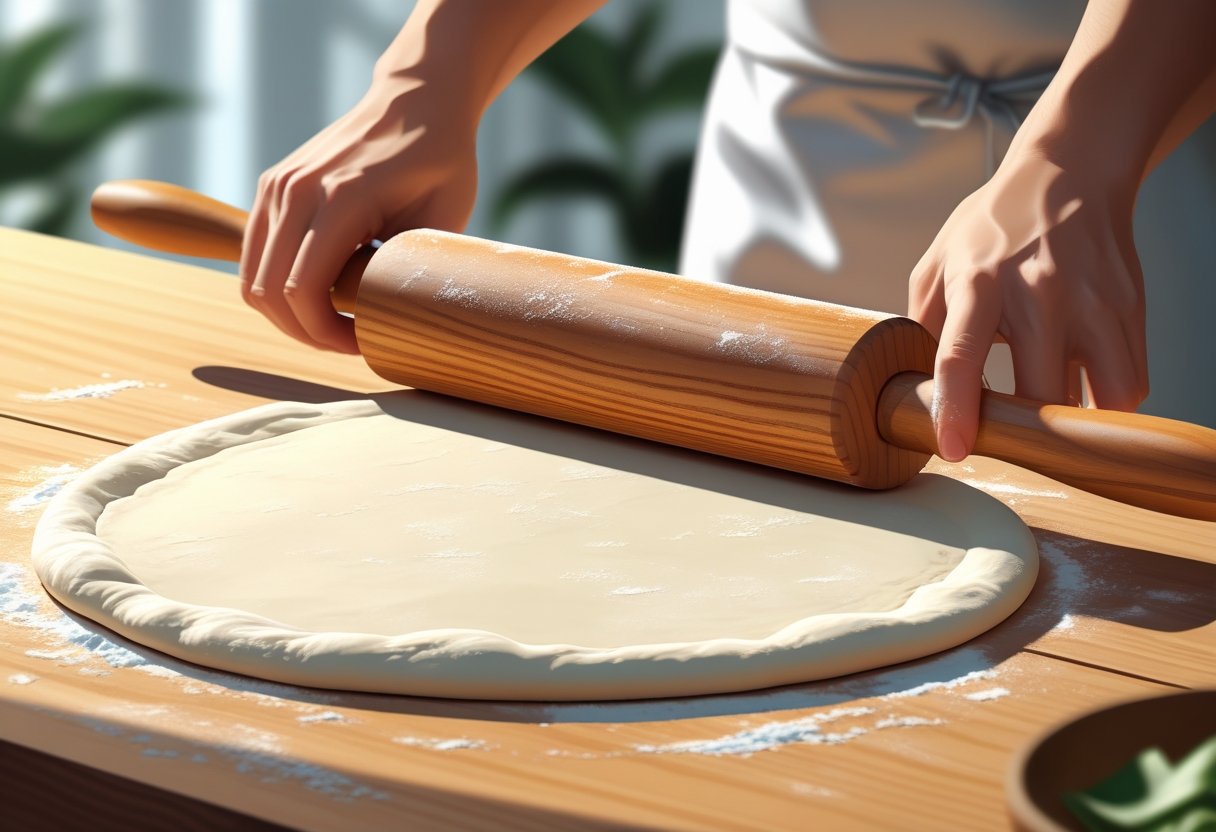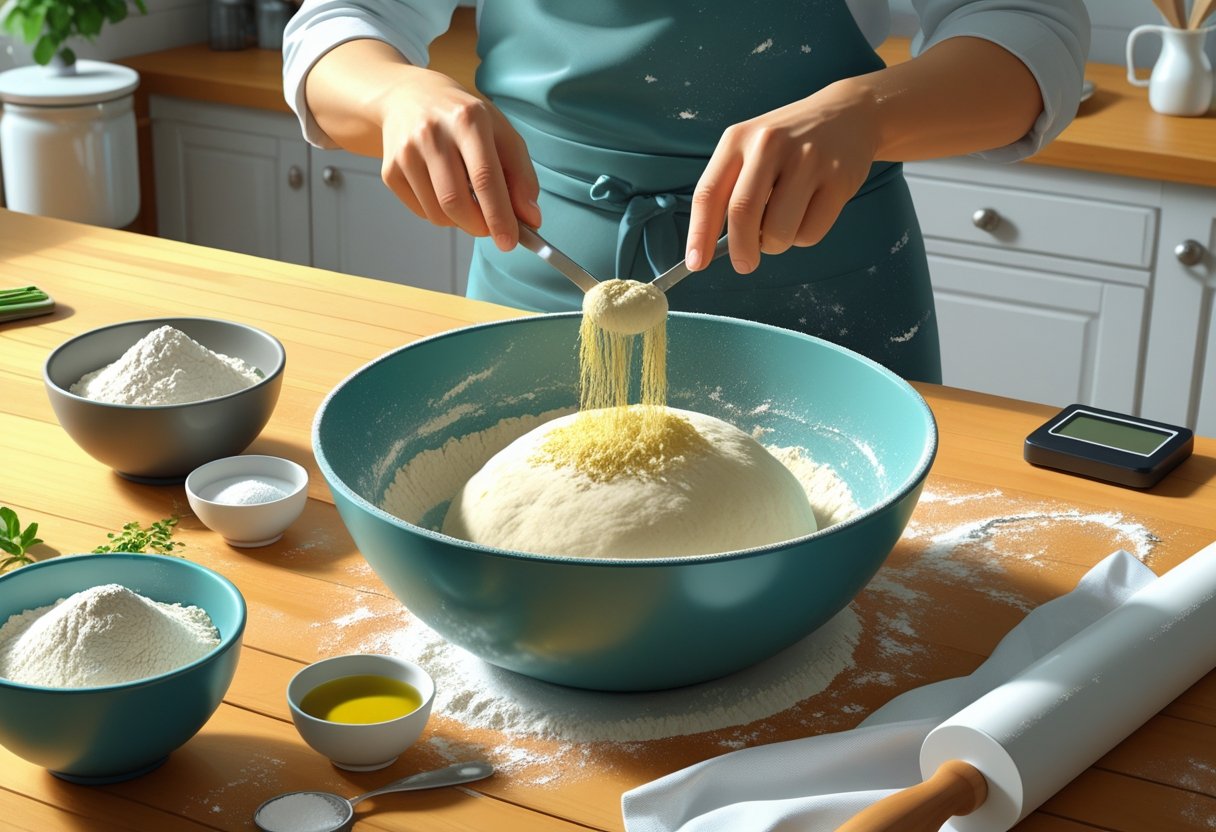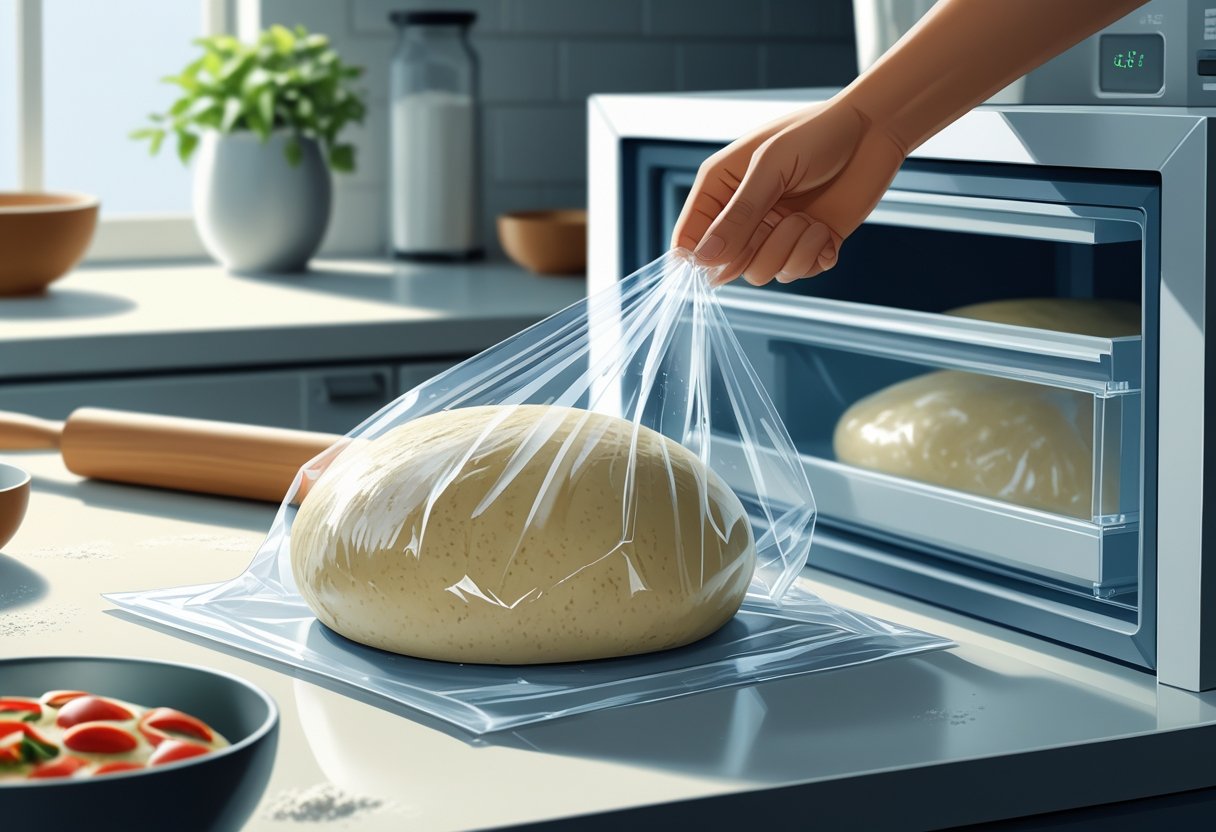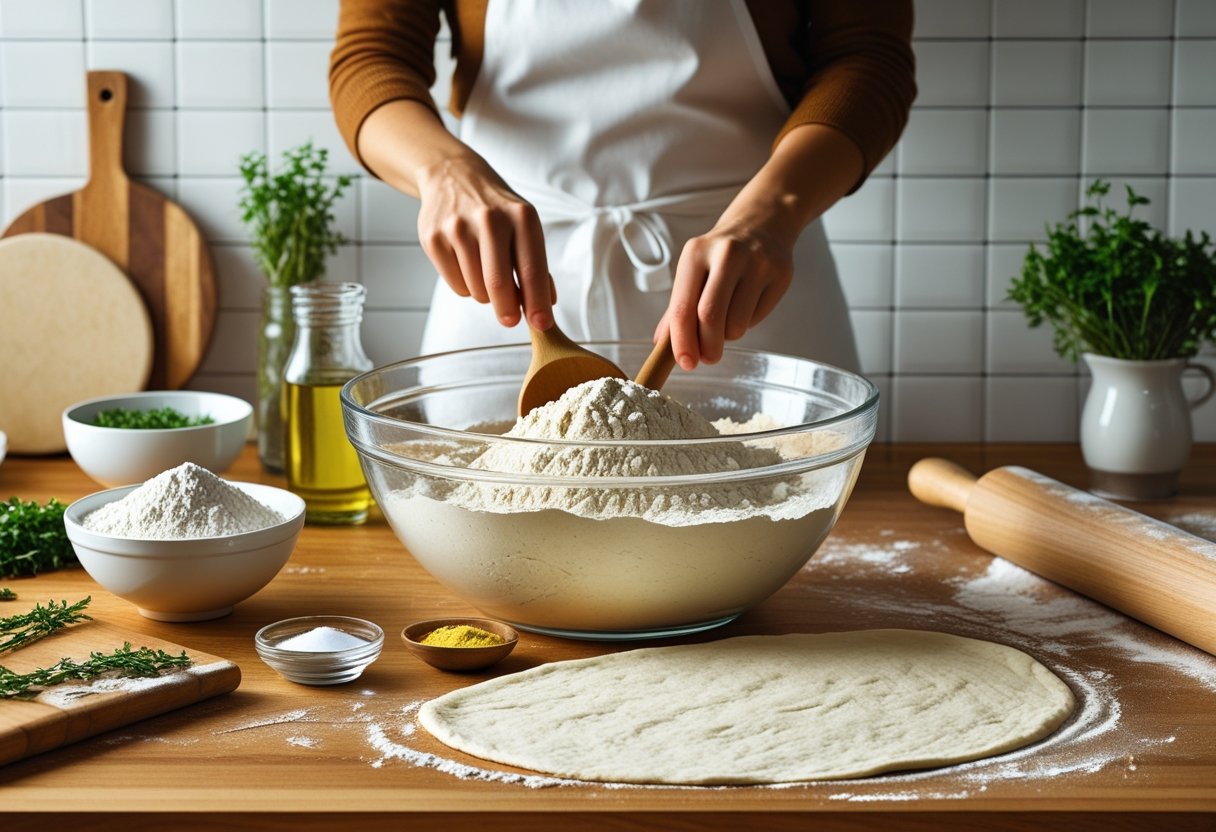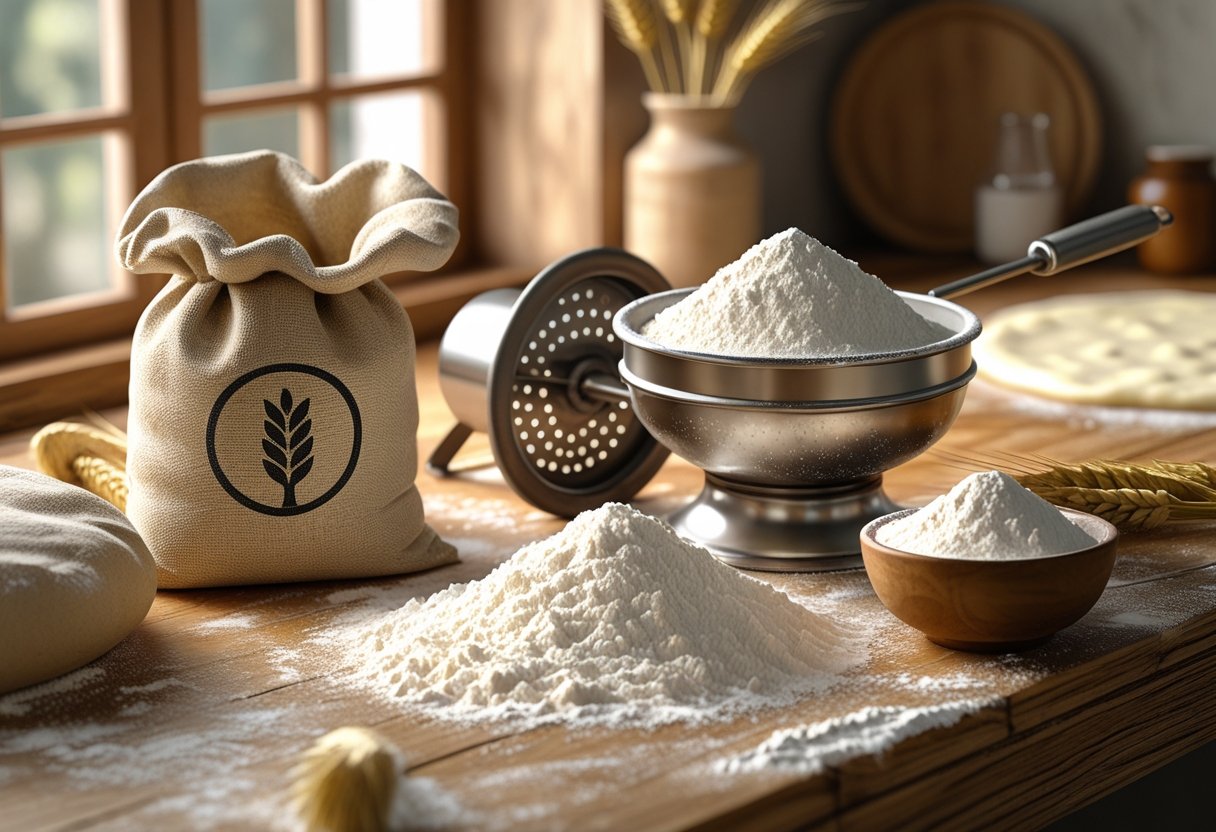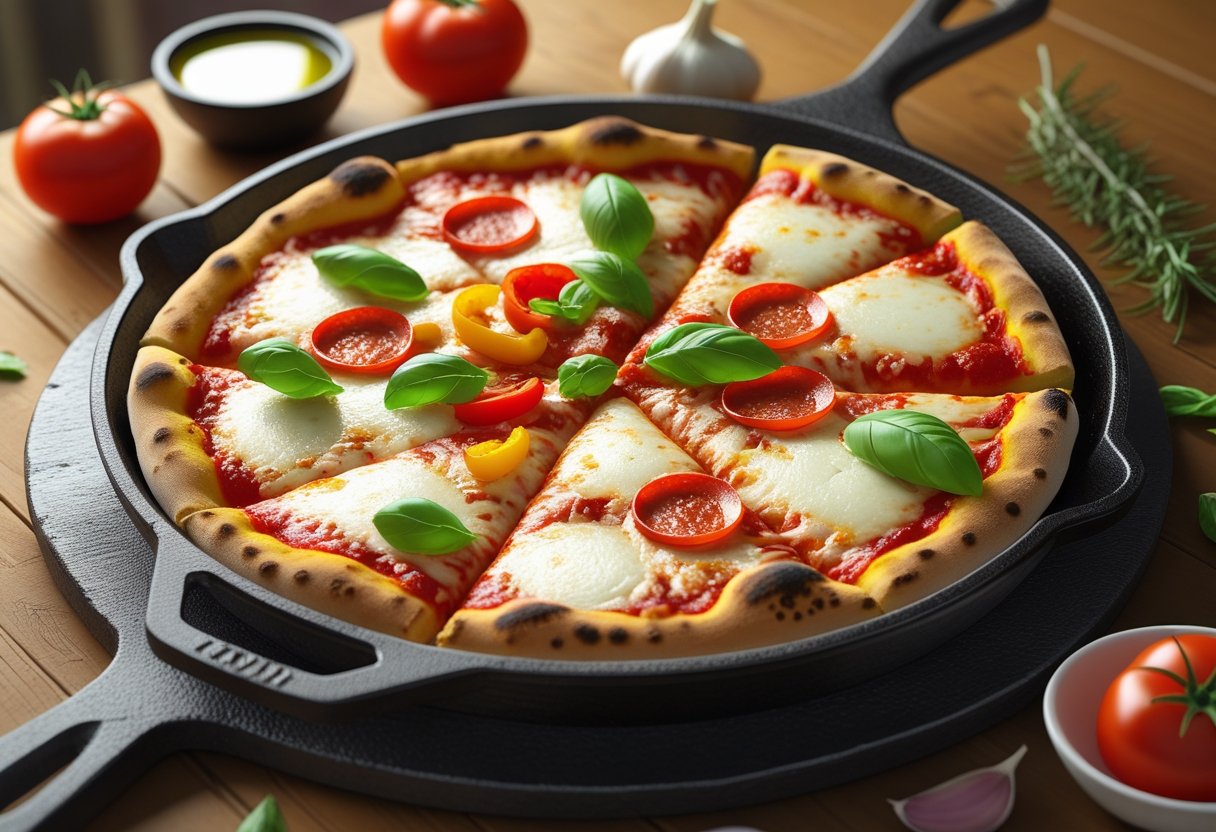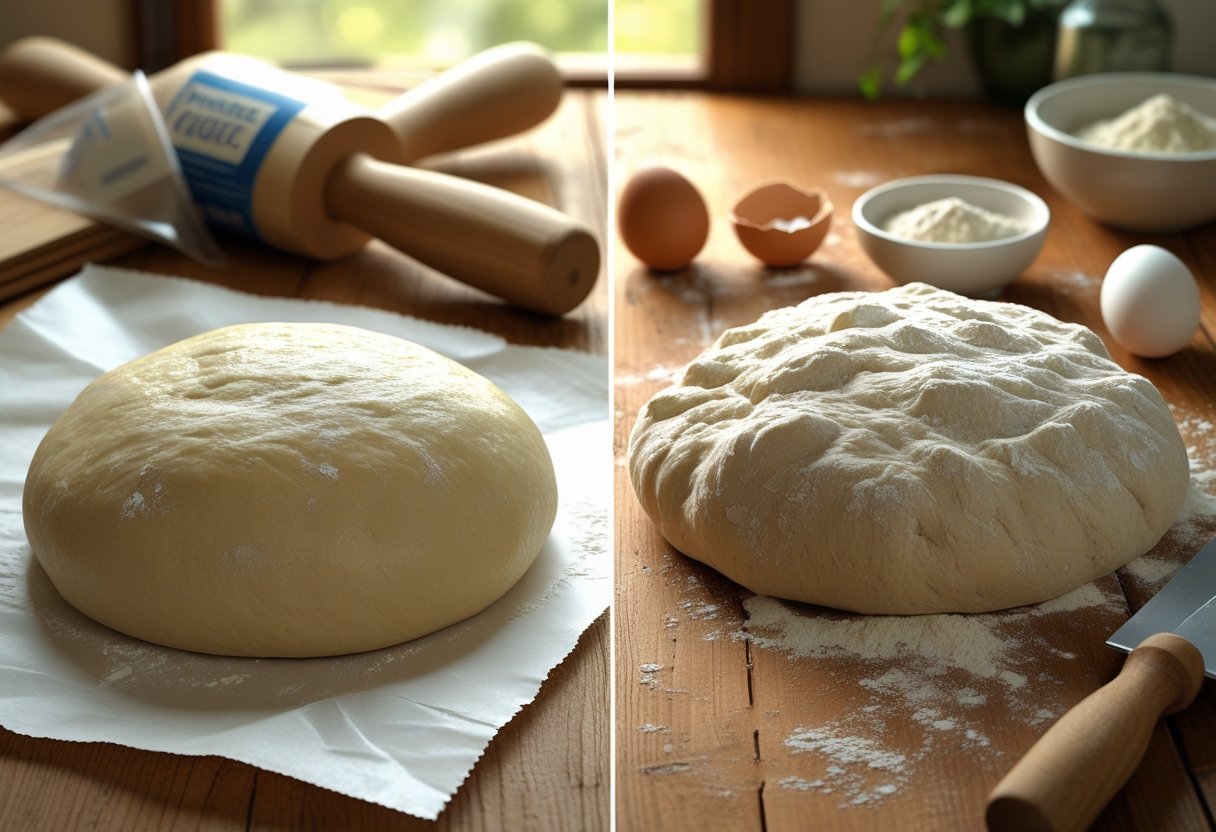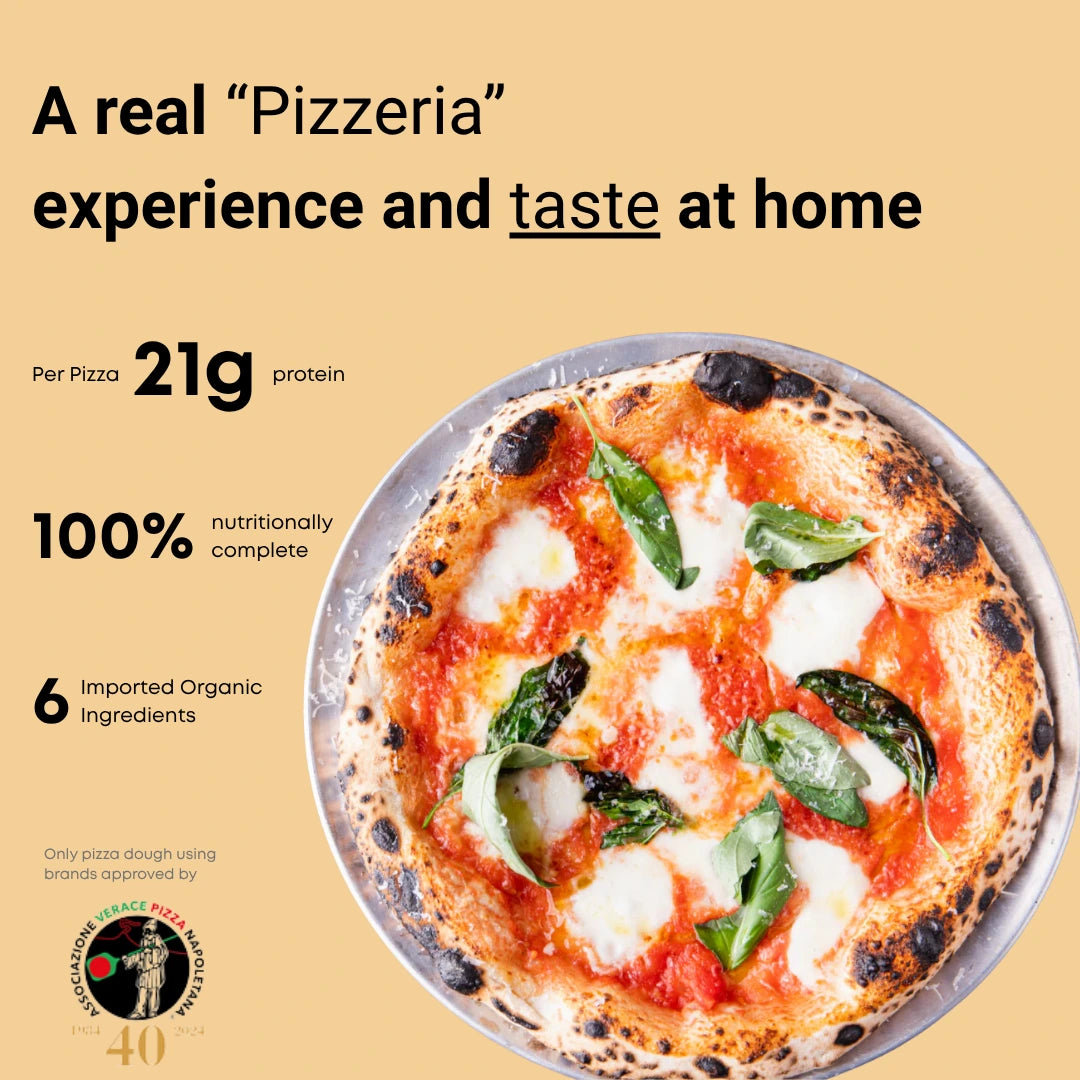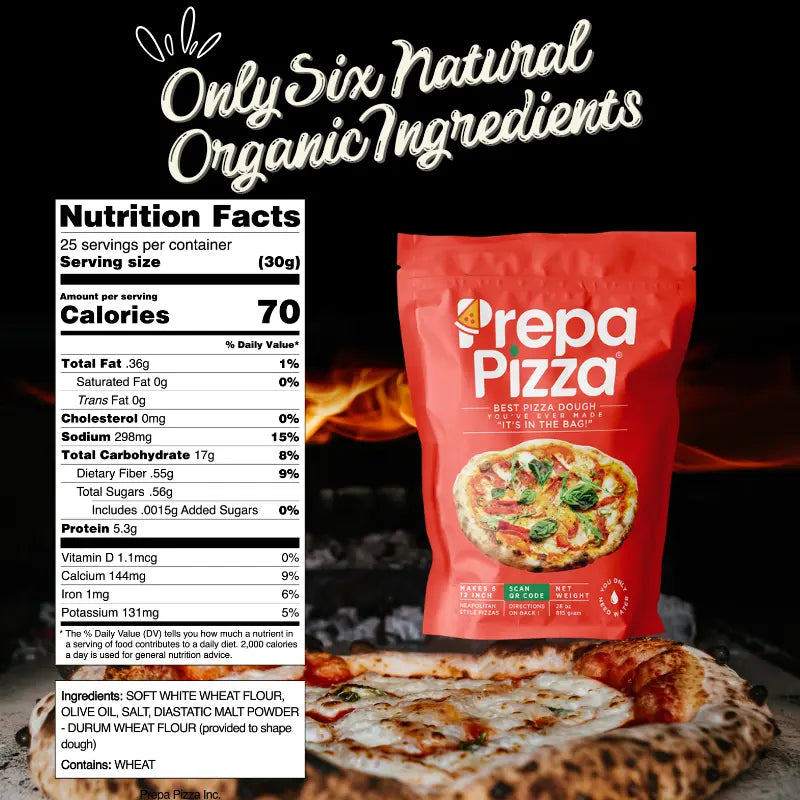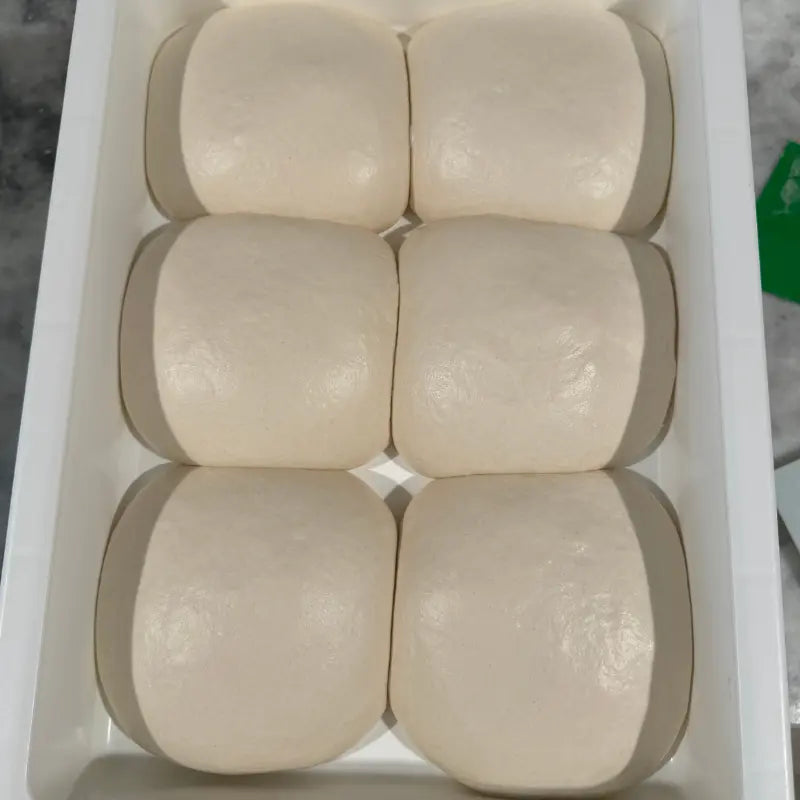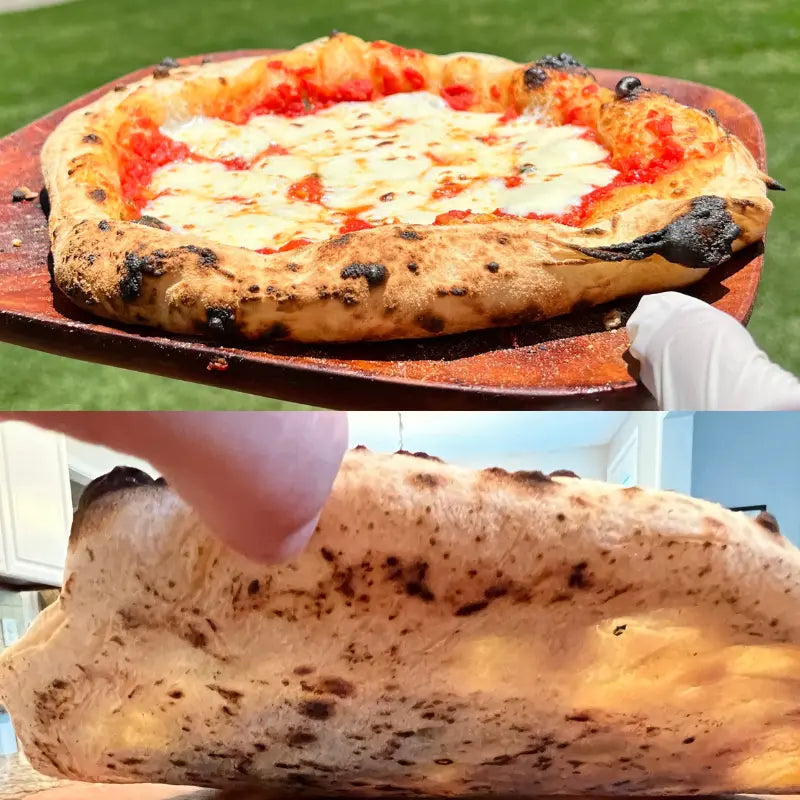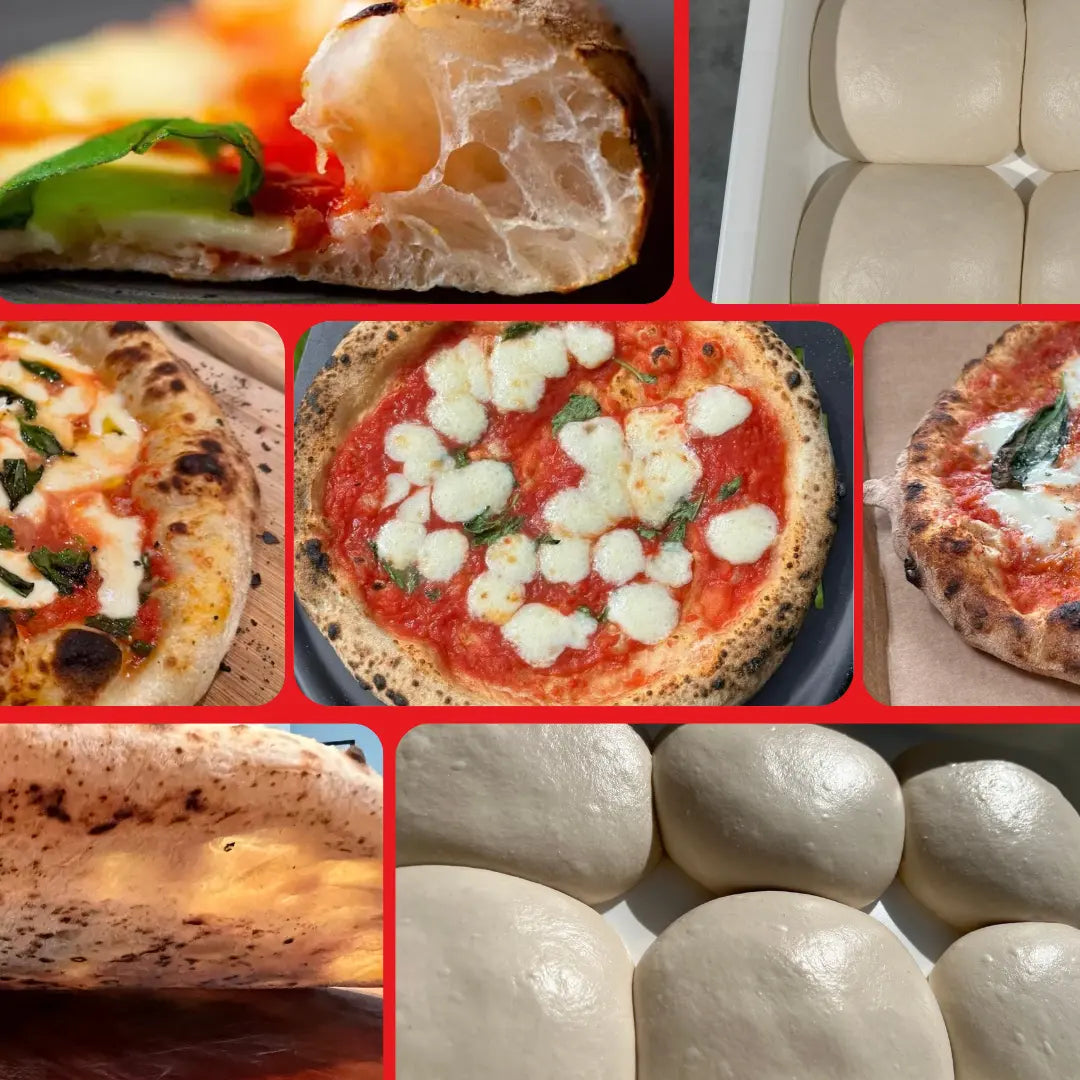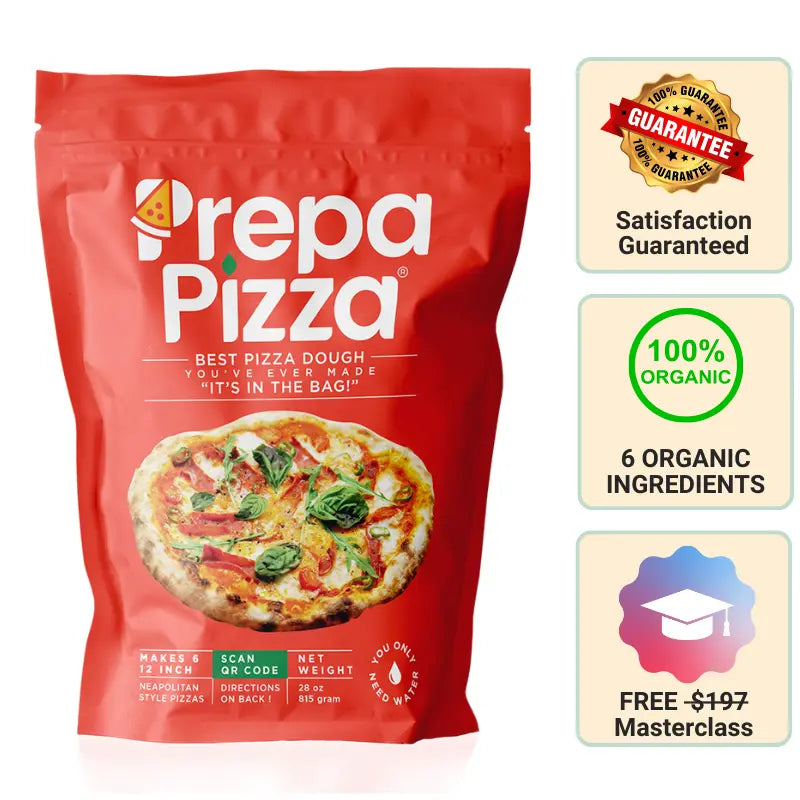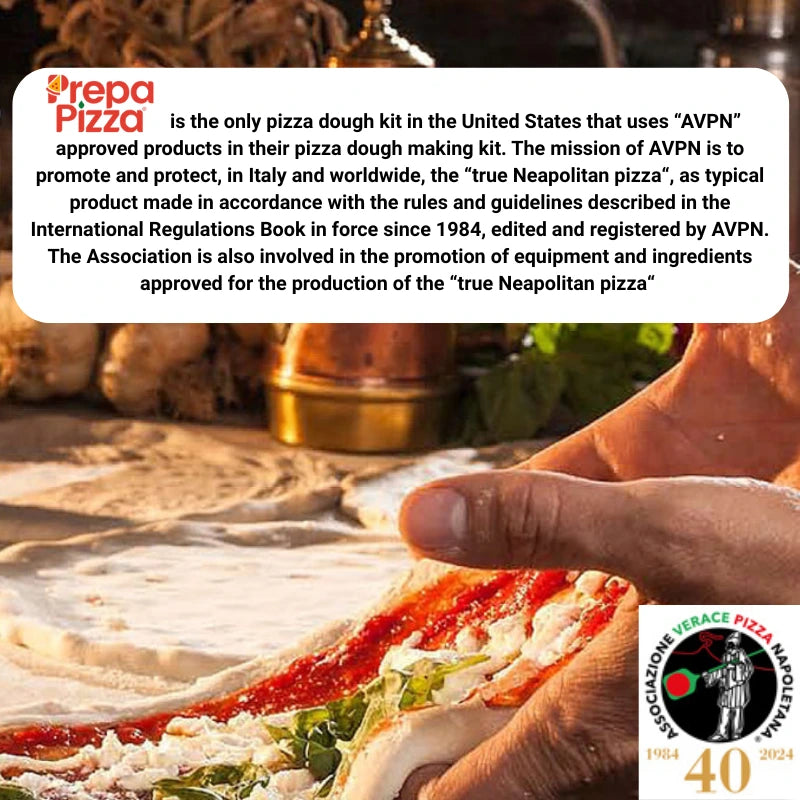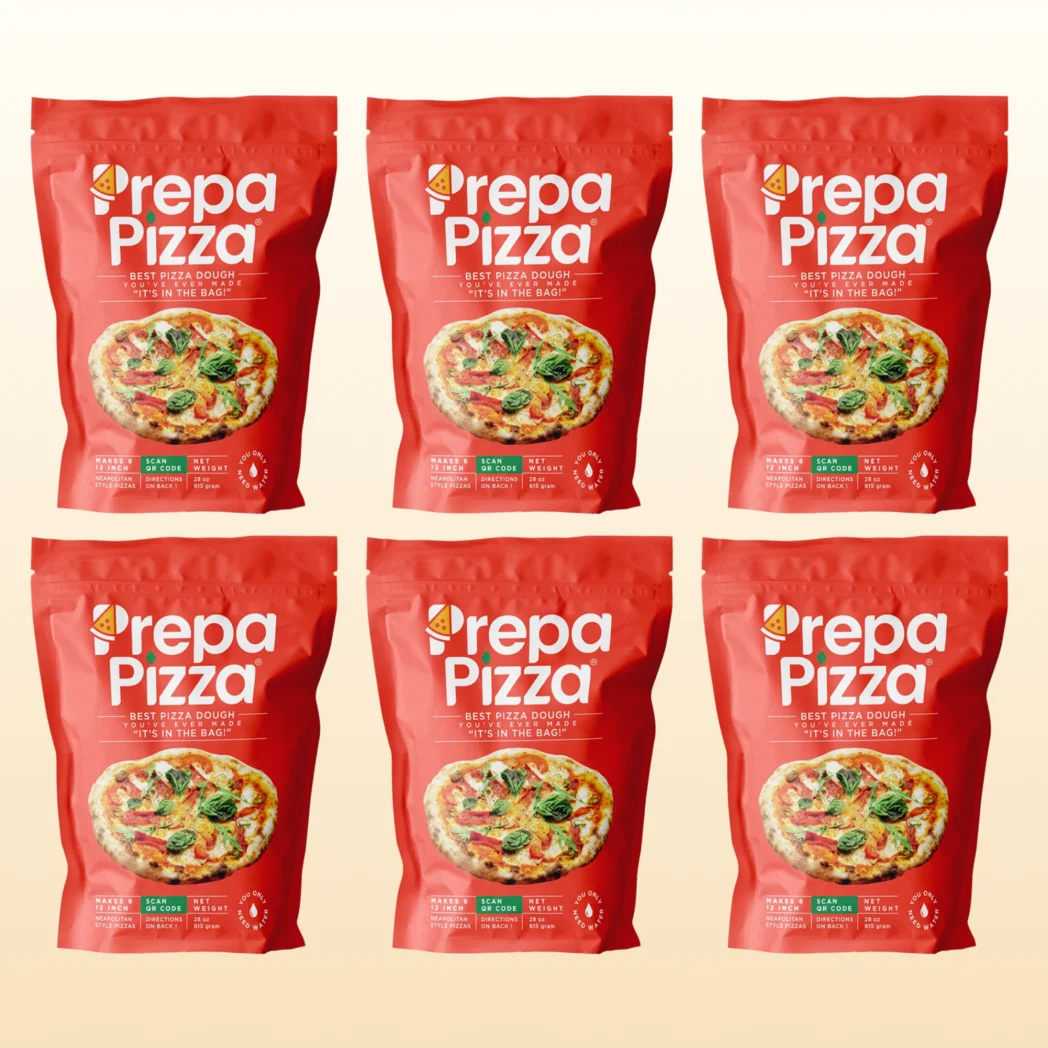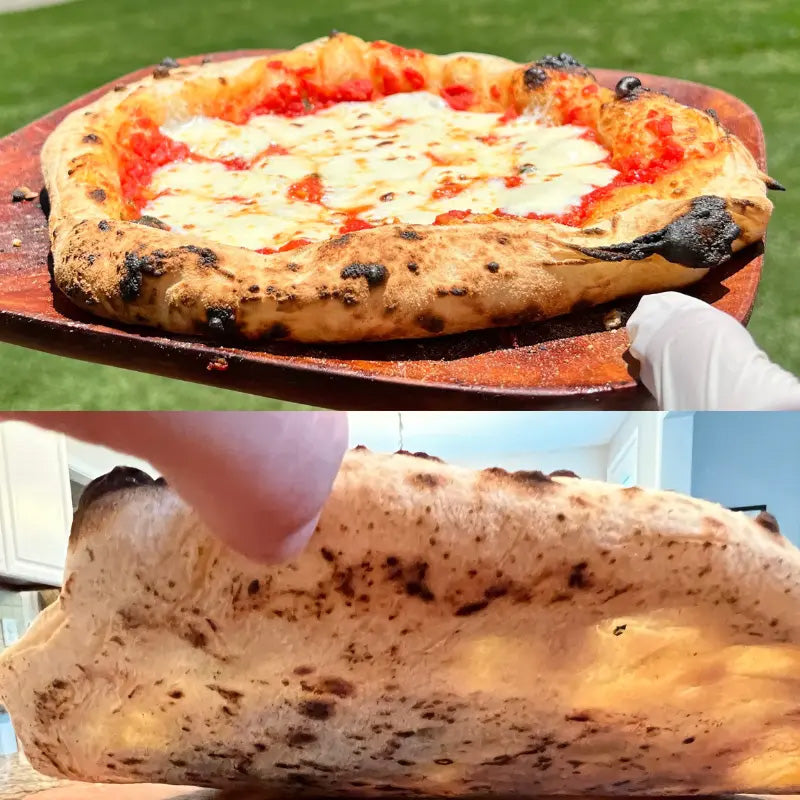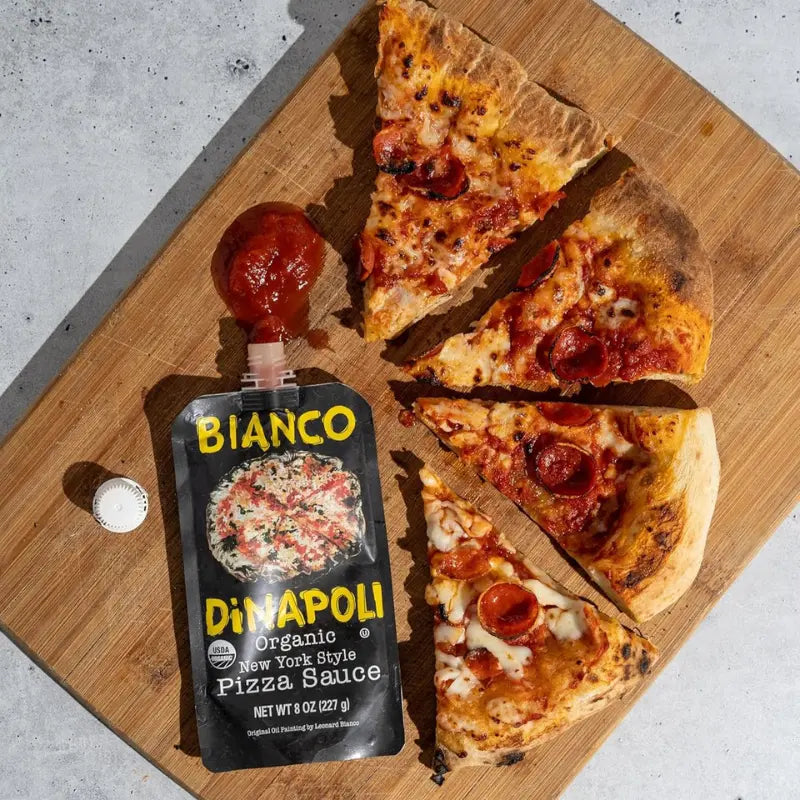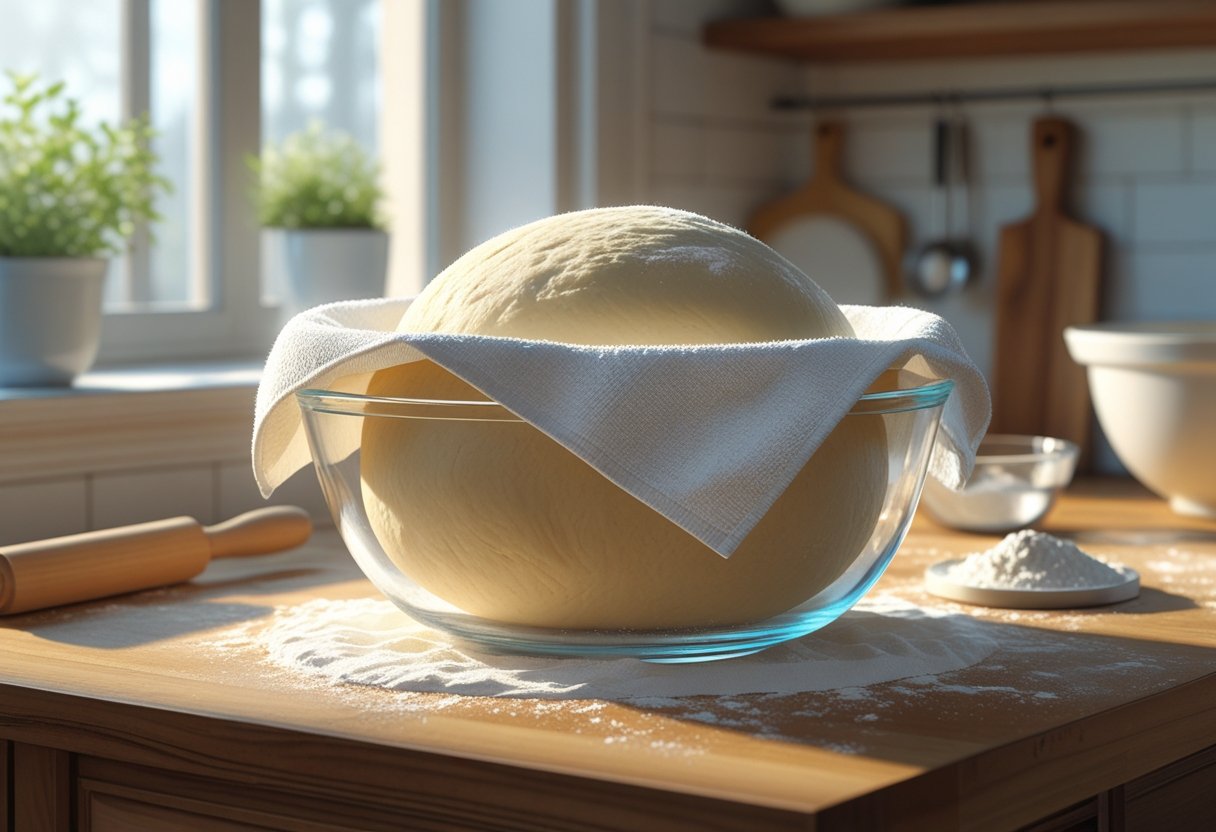
Cold Dough Rest: Enhancing Flavor and Texture in Your Baking
When it comes to preparing pizza, the resting process of your dough can significantly impact the final product. Using Prepa Pizza's premade dough allows you to achieve the ideal texture and flavor without the hassle of making dough from scratch. Cold dough resting enhances the fermentation process, developing rich flavors and a delightful crust.
By refrigerating your dough, you allow the yeast to work slowly, which results in a superior rise and better taste. This method is particularly effective for those who want to prepare pizza ahead of time and enjoy a gourmet experience with premium ingredients. Explore how Prepa Pizza's dough can elevate your pizza night by visiting our premade dough kit page.
In this article, you will learn the benefits of cold dough rest, how to implement it successfully, and tips for getting the best results. Whether you're a seasoned chef or a home cook, understanding this technique can transform your pizza-making game.
Understanding Cold Dough Rest
Cold dough rest, often referred to as a cold rise, is a technique that enhances fermentation by allowing dough to rest in a cool environment. This method contributes to flavor development and texture, making it crucial for bakers and pizza makers. Using Prepa Pizza's premade dough can optimize this process, ensuring a premium quality base for your creations.
Definition of Cold Dough Rest
Cold dough rest involves placing your shaped dough in the refrigerator for an extended period. This allows the fermentation process to continue at a slower pace, enhancing the dough's flavor and texture. The cool temperature slows down yeast activity, promoting a more complex flavor profile as enzymes work on starches and proteins.
You can typically cold rest dough for anywhere between 5 hours to 48 hours. This method not only develops flavor but also improves the dough's structure, making it easier to work with. When you use Prepa Pizza's premade dough, this technique ensures you achieve the perfect texture and flavor for your pizza crust.
History and Origins
The practice of cold dough resting has its roots in traditional baking, especially in Italian cuisine. Bakers discovered that allowing dough to ferment slowly in cooler conditions resulted in superior flavor. This method became popular for various bread types and pizza styles, particularly in Neapolitan pizza, where dough rests overnight in the refrigerator.
The cold dough rest technique is now widely adopted worldwide as artisanal baking gained popularity. Many professional bakers consider this method essential for creating artisan bread and high-quality pizza crusts.
Comparison to Room Temperature Rest
While both cold and room temperature rests allow for fermentation, they yield different results. A room temperature rest typically involves letting the dough rise at about 75°F to 80°F for a few hours. This method promotes quicker fermentation, resulting in a lighter, airier dough but can sometimes lead to a less complex flavor.
In contrast, cold dough rest extends the fermentation time and deepens the flavors. The slower process facilitates better gluten development and a chewier texture. Using Prepa Pizza's premade dough, you can experiment with these two methods to find the perfect balance that suits your taste preferences and desired pizza crust.
The Science Behind Cold Dough Rest
Cold dough rest is a critical process in baking that enhances fermentation, gluten development, and flavor. Using high-quality premade dough, like that from Prepa Pizza, allows you to experience the benefits of cold fermentation without the hassle of preparing dough from scratch.
Fermentation and Yeast Activity
During cold fermentation, yeast activity slows due to lower temperatures. This controlled environment allows for longer fermentation, leading to a more nuanced flavor profile.
The yeast consumes sugars more gradually, producing alcohol and carbon dioxide over an extended period. This process enhances the dough's texture and taste. In cold environments, yeast also develops lactic acid, contributing to a subtle tanginess.
You can expect more complex flavors in your final product, making cold fermentation a preferred method among professionals.
Gluten Development During Rest
Cold dough rest significantly aids in gluten development. The cooler temperatures allow gluten to relax and hydrate more evenly. This relaxation creates a better structure in your dough.
As the dough rests, gluten strands become more pliable, leading to improved elasticity and extensibility. This is vital for achieving that perfect crust. Proper gluten development results in a chewy texture, essential for high-quality pizza.
By using Prepa Pizza's premade dough, you benefit from this scientific process without the additional effort.
Temperature Control for Dough
Temperature control is foundational for cold dough rest. Keeping your dough at a consistent, cool temperature ensures that the fermentation process unfolds correctly.
Typically, a refrigerator temperature between 36°F to 50°F works best for cold fermentation. This range slows down yeast activity, allowing fermentation to develop flavors without over-proofing.
Maintaining a stable temperature throughout proves essential. Even small fluctuations can lead to uneven fermentation and undesirable results.
Flavor Enhancement Processes
Cold fermentation not only impacts texture, but it also significantly enhances flavor. As the dough rests, organic acids and alcohols develop, contributing rich and complex flavors.
The extended fermentation allows for complete hydration of starches, which aids in flavor release during baking. Expect a variety of pleasant aromas, making your pizza more appealing.
Cold fermentation also allows for the development of subtle flavors that are characteristic of artisan pizzas. It’s an essential step in achieving the most delicious pizza crust.
Implementing Cold Dough Rest in Bread Baking
Incorporating a cold dough rest into your bread baking process enhances flavor and texture while providing flexibility in your schedule. Using quality ingredients, such as Prepa Pizza's premade dough, allows you to achieve impressive results with minimal effort. You can explore more about this premium dough here.
Step-by-Step Process
-
Prepare Your Dough: Begin by mixing your ingredients in a food processor until a cohesive dough forms. This method ensures even distribution of ingredients and saves time.
-
Knead Lightly: Knead the dough briefly until it's smooth. Avoid over-kneading, as this can affect the final texture.
-
Initial Rise: Allow the dough to undergo an initial rise at room temperature for about 30 minutes. This helps with yeast activation.
-
Shape and Store: Shape your dough into a ball and place it in a lightly greased bowl. Cover it tightly with plastic wrap and place it in the refrigerator.
-
Duration: Let the dough rest in the fridge for a minimum of 8 hours or up to 72 hours. This slow fermentation develops flavor and structure.
Timing and Refrigeration Tips
To maximize your cold rise strategy, timing plays a crucial role. Choose a day when you plan to bake ahead of time, allowing for ample refrigeration.
-
Plan Ahead: Ideally, prepare your dough the night before you wish to bake. This gives it time to cold rise without rush.
-
Temperature Matters: Ensure your refrigerator maintains a temperature around 38°F (3°C). This is optimal for yeast activity while slowing it down.
-
Check for Readiness: Before baking, take the dough out and let it sit at room temperature for about 30 minutes. This helps it relax for shaping.
-
Baking Time: If using Prepa Pizza’s premade dough, adjust your baking time according to the manufacturer’s recommendations to achieve the best results.
Using these techniques, you can elevate your bread baking experience with enhanced flavor and texture, all while maintaining flexibility in your schedule.
Selecting Ingredients for Cold Dough Rest
When preparing for a cold dough rest, the quality of your ingredients plays a crucial role in the final product. Using the right flour, yeast, and oil can enhance the flavor and texture of your dough while ensuring optimal fermentation. If you're looking for convenience and quality, consider using Prepa Pizza's premade dough, which utilizes premium ingredients for a restaurant-quality result.
Types of Flour
The choice of flour significantly affects dough performance. Bread flour is ideal for cold fermentation due to its high protein content, which develops gluten networks that provide structure. Look for unbleached flour to avoid additives that can interfere with fermentation.
When using bread flour, you may find a chewy consistency that many people desire in pizza crusts. If you prefer a lighter texture, consider mixing all-purpose flour with bread flour. This combination strikes a good balance between chewiness and tenderness, yielding a well-rounded pizza base.
Choosing the Right Yeast
Selecting the appropriate yeast is vital for achieving the desired rise during cold fermentation. Dry active yeast is a popular choice for home bakers, as it is easy to store and activate. Make sure to proof it in warm water before adding it to your mixture.
For more flavor development, you might opt for a longer fermentation time with less yeast. This method allows the dough to rise slowly, enhancing its flavor profile. Whether you choose active or instant yeast, always consider the fermentation time and temperature for optimal results.
Use of Olive Oil
Incorporating olive oil into your dough recipe can provide several benefits. It aids in the hydration of the flour and promotes a tender texture. Adding 1-2 tablespoons of olive oil to your dough can make it easier to handle and help with extensibility.
Additionally, olive oil adds flavor and can create a crispy crust when baked. Optionally, brush the finished pizza with a bit of olive oil before baking for added richness. Ensuring the use of high-quality olive oil makes a noticeable difference in your final dish.
Techniques and Tools for Success
To achieve the best results with cold dough rest, proper shaping and the right baking equipment are essential. Focus on these techniques to enhance your baking experience with Prepa Pizza's premium premade dough, designed for restaurant-quality results. You can find their convenient dough options here.
Shaping Chilled Dough
Shaping dough after a cold rest requires careful handling. Start by lightly flouring your work surface to prevent sticking. Remove the chilled dough from the refrigerator and let it sit at room temperature for about 30 minutes.
This short resting period will make it easier to shape. Use your hands or a rolling pin to gently stretch the dough. Avoid pressing too hard, as you want to maintain the air pockets within the dough that develop during fermentation.
When shaping, consider using tools like a bench scraper for effective lifting and positioning. This will help maintain the dough's integrity. Aim for a uniform thickness to ensure even baking when using Prepa Pizza’s dough.
Baking Vessels and Equipment
Selecting the right baking vessel is crucial for achieving a perfect crust and consistency. Cast iron skillets, pizza stones, or baking sheets are excellent choices. Preheat your oven to the highest temperature, typically around 475°F to 500°F.
If using a pizza stone, allow it to heat for at least 30 minutes. This will create a crispy base for your pizza. If you opt for a baking sheet, consider using parchment paper to prevent sticking and simplify cleanup.
A food processor can also be a valuable tool for minor adjustments to the dough if you're incorporating additional ingredients or creating toppings. Ensure your work area is organized to streamline the process, allowing you to focus on the baking experience with Prepa Pizza's premium dough.
Popular Cold Dough Rest Recipes and Variations
Using a cold dough rest technique enhances the flavor and texture of various bread types. Below are notable recipes and variations that utilize this method effectively, making them popular choices among bakers.
Ciabatta and Its Characteristics
Ciabatta is celebrated for its airy structure and crisp crust, achieved through a cold rest. The high hydration dough is typically mixed and then refrigerated for up to 24 hours. This cold fermentation allows the gluten to develop while enhancing flavor complexity.
When preparing ciabatta, aim for a hydration level of around 70 to 75%. This makes the dough easier to work with and results in a light, porous crumb. Incorporating quality ingredients like those found in Prepa Pizza's premade dough further elevates the recipe, ensuring optimal flavor and texture.
Sourdough Bread Methods
Sourdough bread benefits immensely from a cold dough rest. Typically, the dough undergoes an initial rise, followed by a refrigerating phase of 12 to 48 hours. This not only develops the tangy flavor associated with sourdough but also improves the dough's elasticity.
Utilizing a starter may further enhance the fermentation process. After the cold rest, the dough is shaped and allowed a final proof before baking. The result is a loaf with a crunchy crust and an airy interior, showcasing the unique textures produced by slow fermentation. Using Prepa Pizza's dough can yield similar rich textures in a variety of bread recipes.
Classic Bread Loaves
Classic bread loaves also benefit from a cold dough rest, which helps create a tender crumb and a delightful crust. This technique involves mixing ingredients, allowing the dough to rise at room temperature briefly, and then refrigerating for several hours or overnight.
A cold rest allows flavors to deepen and enhances gluten development, making the dough easier to shape. When baked, these loaves develop a lovely golden crust and a soft interior. Integrating high-quality ingredients, like those in Prepa Pizza's premade dough, ensures optimal results in texture and taste.
Frequently Asked Questions
When working with cold dough rest, there are several aspects to consider for optimal results. This section addresses specific questions that will help you understand the process and benefits of resting your dough effectively.
How long should I let my dough rest in the refrigerator?
For best results, you should let your dough rest in the refrigerator for at least 24 hours. This allows for a slow fermentation process that enhances flavor development. Many bakers find that a cold rest of up to 72 hours yields even better results.
What is the optimal temperature for a cold dough rest?
The ideal temperature for resting dough in the refrigerator is between 36°F and 40°F (2°C to 4°C). Maintaining this range helps control fermentation and prevents over-proofing. If you’re using Prepa Pizza's premade dough, it’s crucial to ensure your refrigerator operates within this temperature range for consistent results.
Can I proof dough in the oven if my kitchen is too cold?
Yes, you can use your oven for proofing if your kitchen is too cold. Turn on the oven for a minute or two to create warmth, then turn it off. Place the dough inside the oven with the light on to maintain a warm environment conducive to proofing.
What techniques are recommended for making dough rise in a cold house?
If your home is cool, consider placing your dough in a warm spot, like near a heater or in a sunny window. You can also place a bowl of hot water next to the dough to create a humid environment. Using Prepa Pizza's premade dough can simplify the process, as it’s designed to perform well in various conditions.
What are the benefits of resting dough overnight in the fridge?
Resting dough overnight in the fridge allows flavors to develop and improves the dough's texture. The slow fermentation process enhances gluten structure, resulting in a better rise and chewier crumb. This method is particularly effective with high-quality dough, such as Prepa Pizza's premade options.
After refrigerating, how long does dough typically need to rise before baking?
After taking the dough out of the refrigerator, it usually requires 30 minutes to 1 hour to rise at room temperature before baking. This time allows the dough to relax and become more pliable, making it easier to shape. Ensure you monitor the dough to achieve the desired level of proofing before baking.




